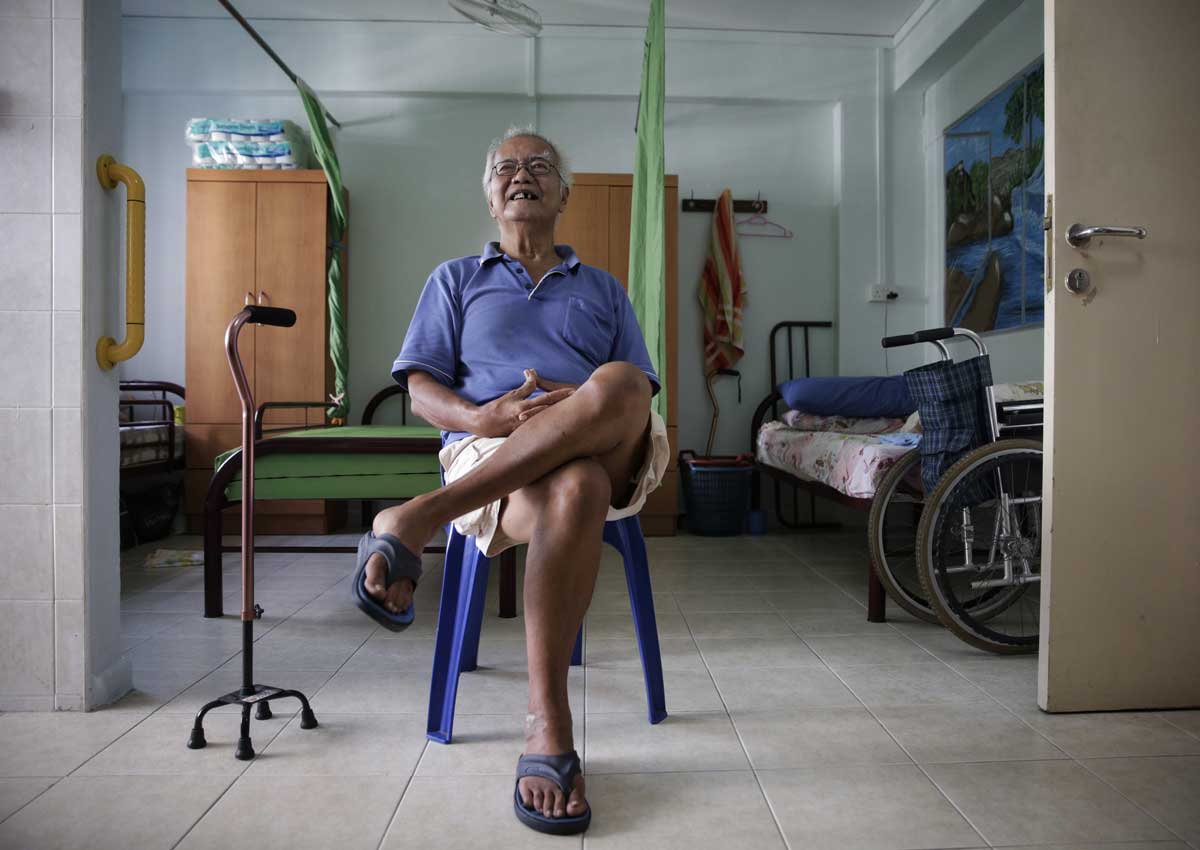A government plan to set up 60 senior group homes by year’s end is not likely to materialise and experts say the model, while helpful, needs to be reviewed.
The target was set in 2013 by then Acting Minister for Social and Family Development Chan Chun Sing. But there are just 14 senior group homes to date.
These homes – clusters of flats each shared by a few seniors – can take in up to 250 elderly people. But as of March, only 37 people live in them.
A spokesman for the Ministry of Social and Family Development (MSF) told The Straits Times: “The initial target… is being reviewed due to new developments in home and community aged care options.”
The Ministry of Health (MOH) has been expanding home-care services by public hospitals and welfare groups, for instance.
The MSF said it is working with the MOH and partners to improve the coordination of services and will monitor the take-up rates and developments in the aged care sector.
Voluntary welfare organisations (VWOs) which run the senior group homes said the model is good, but needs to be tweaked to attract more seniors.
The homes were piloted in 2012 to let elderly people with little or no family support age in place, in an environment they are familiar with, instead of in nursing homes.
Each senior group home is made up of five to eight rental flats, each shared by two or three seniors.
Admission to the homes is via referrals from the Agency for Integrated Care.
Occupants are free to pursue their own interests; VWOs coordinate and monitor services such as social activities for the seniors.
Mr Chan had said in 2013 that the two homes piloted had worked well.
“Many of the elderly have shared that, when they help to take care of (one another), they feel a sense of purpose, a sense of mission.”
But frail seniors are sometimes unable or unwilling to live with and look after other elderly people, said VWOs.
“It is not easy to live with a complete stranger, especially when one or both residents are wheelchair users and require special assistance,” said a spokesman for NTUC Health, which runs a senior group home of four flats in Bukit Merah View.
A spokesman for Thye Hua Kwan Moral Charities said the low take- up rate could be due to it being hard to find seniors who are both eligible and willing to live in such homes.
The charity runs three homes – in Ang Mo Kio, Indus Road and Pipit Road. It said residents face space constraints when three seniors live in a one-room flat; this could contribute to conflicts among flatmates.
Having just one toilet for three seniors is also not a good idea, said Ms Lucy Tan, cluster director of Peace- Connect Cluster Operator (Pecco), which runs a home of eight flats in North Bridge Road.
“Seniors spend more time in the toilet because they want to be careful to not fall,” she said, explaining that they would prefer to share toilets with fewer people.
While elderly people can be good befrienders of their peers and residents can feel confident they will not die alone without anyone knowing, seniors may not be adequate caregivers, she added.
She cited one instance in which a resident fell, but his flatmate did not alert VWO staff.
“We asked the flatmate why he didn’t pull the cord to activate the alert alarm system. He forgot about the cord. He also did not see blood, so he thought the fall was nothing dangerous.”
VWOs and residents said some aspects of the senior group home model need to be reviewed, but noted that it still serves as a good option for seniors to age in place.
Retired odd-job labourer Kang Siew Keng, 71, moved to the Pecco home about a year ago, after living in two dormitory-style homes for the elderly for about 10 years.
He said: “There is more privacy and I wanted the freedom. There were a lot of limitations in the aged homes – what time to sleep, what food we eat, and you share the TV with others. Here, I can watch whatever I want.”
VWOs suggested reviewing the eligibility criteria to improve the take-up rate of senior group homes – including accepting seniors who are not eligible for rental flats.
They also said not more than two seniors should be allowed to live in a single one-room flat, so seniors would worry less about space constraints or conflicts with flatmates.
Mr Kang also thinks having three residents in a flat is too crowded.
He lives with a flatmate in his one- room flat and even then they try not to cross paths. “He goes out in the morning. When he comes back, I go out. I have no quarrel with him. We come here to relax, not to quarrel.”
goyshiyi@sph.com.sg

This article was first published on June 10, 2016.
Get a copy of The Straits Times or go to straitstimes.com for more stories.






